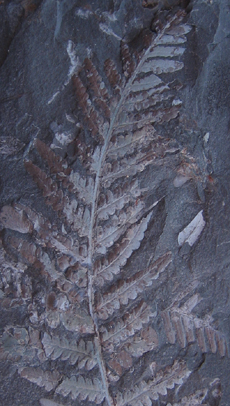
 |
 |
Science
Olympiad
| Division (Phylum) Pteridophyta or Filicophyta | |
The leaves of ferns are formed as fronds. Fronds may be simple or compound and are attached to a vertical stem or underground rhizome by a stipe (which corresponds to the petiole in angiosperms). Compound fronds are sub-divided numerous times into pinnae (singular: pinna), which are attached to a long central axis called the rachis. Pinnae may be subdivided into ultimate units called pinnules, which may be further sub-divided. Ferns like to grow in moist shady places. Like clubmosses and horsetails, ferns require a thin film of water covering their small gametophytes to reproduce sexually. Like clubmosses and horsetails, ferns also reproduce asexually with spores. The spores in clubmosses and horsetails are produced in cones on the sporophyte. In ferns, spores are produced in round structures called sori (sorus: singular) on the underside of pinnules. The First Forests Middle Devonian fossil trunks from Gilboa, New York provide a window into the earliest forests. Stumps with roots stretching out into a paleosol (fossil soil) have been preserved as casts at a site known as Riverside Quarry. The casts reveal only the outer structure of these tree stumps. From the 1870's and until recently the stumps have been assigned to various plant groups including Psaronius (the tree fern), Eospermatopteris (the accepted name) and a progymnosperm (Nudds & Selden, 2008, pp. 98 & 99). The mystery of Eospermatopteris identity was not solved until recently. In 2007 Stein et al. described the discovery of fossil trees from Shoharie County, New York uniting the crown of Wattieza with the trunk of Eospermatopteris. Wattieza is a genus of prehistoric tree that belongs to the class Cladoxylopsida. This class is currently placed within the division Pteridophyta. So, fossil stumps at Gilboa are cladoxylopsid trees related to ferns. Tree Ferns |
|
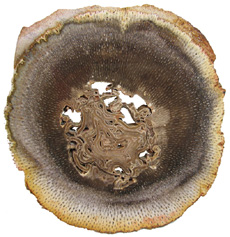 Tree Fern Psaronius brasiliensis Bieland, Maranhao Province, Brazil Pedra de Fogo Formation Permian 15 cm x 14.5 cm |
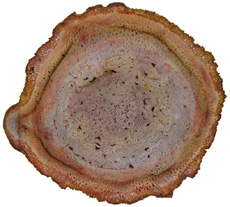 Tree Fern Titea singularis Bieland, Maranhao Province, Brazil Pedra de Fogo Formation Permian 17 cm x 15 cm |
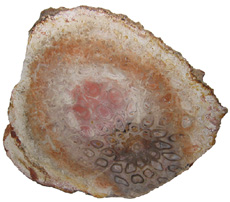 Tree Fern Grammatopteris freitasii Bieland, Maranhao Province, Brazil Pedra de Fogo Formation Permian 20 cm x 19.5 cm |
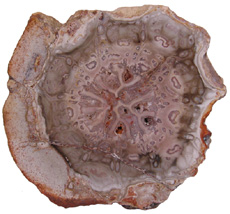 Tree Fern Dernbachia brasiliensis Bieland, Maranhao Province, Brazil Pedra de Fogo Formation Permian 7.5 cm x 7 cm |
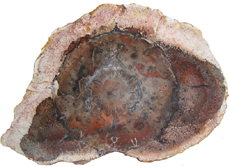 Tree Fern Guairea carnieri Paraguay, South America Permian 20 cm x 12.5 cm |
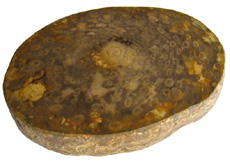 Osmunda Queensland, Australia Jurassic 8.6 cm x 12 cm |
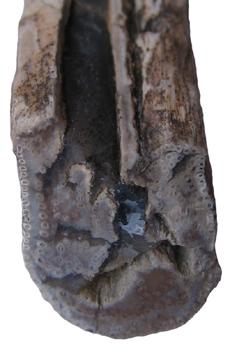 Fern Stipe Section Acrostichum Green River Formation Eocene Wyoming, USA 1.5 cm diameter x 9 cm long |
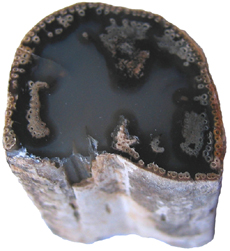 Fern Stipe Section Acrostichum Green River Formation Eocene Wyoming, USA 2 cm diameter x 3 cm long |
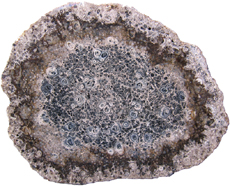 Tree Fern Tempskya Cretaceous Chippy Creek, Idaho 7.5 cm x 6 cm |
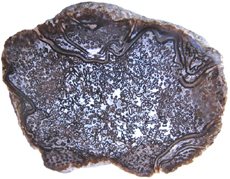 Fern Bud Cyathodendron texanum Eocene South Texas 6 cm x 4.5 cm |
|
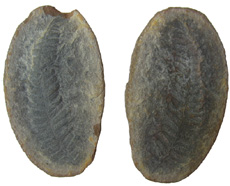 Fern Pinna (Pecopterid Group) Asterotheca sp. Mazon Creek, Illinois Carbondale Formation, Francis Creek Shale Member Paleozoic; Pennsylvanian 10 cm long x 6 cm wide |
Bibliography |
|
Kenrick, P. and Davis, P. (2004). Fossil Plants. Smithsonian Books: Washington. Nudds,
J.R. & Selden P.A. (2008). Fossil Ecosystems
of North America: A Guide to the Sites and Their Extraordinary
Biotas. Chicago: University of Chicago Press. Stein,
W.E., Mannonlini, F, VanAller Hernick, L., Landing, E. & Berry,
C.M. (2007). Giant cladoxylpsid trees resolve the enigma
of the Earth's earliest forest stumps at Gilboa. Nature,
vol 446: pp. 904-907. |
|











